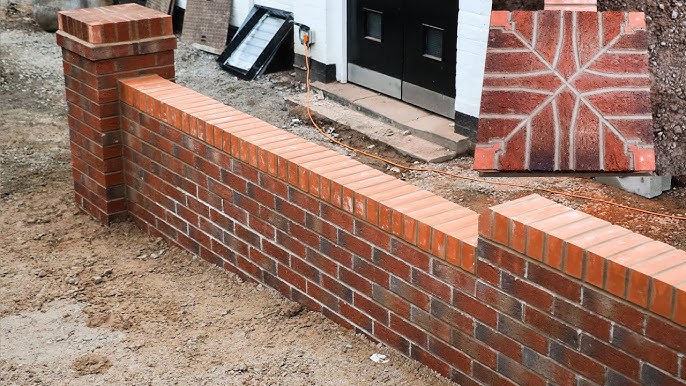how to insulate a house with existing walls 2024
In the realm of home improvement, ensuring adequate insulation is crucial for maintaining comfort, reducing energy costs, and minimizing environmental impact. While new construction often incorporates insulation into the building process, older homes may lack sufficient insulation, leading to energy inefficiency and discomfort. However, the task of insulating existing walls can seem daunting. Fortunately, with the right approach and materials, its entirely feasible to upgrade the insulation of your home's existing walls. In this guide, we'll delve into the how to insulate a house with existing walls 2024.
Why Insulate Existing Walls?
Before delving into the intricacies of the insulation process, it's essential to understand why upgrading your home's insulation is worthwhile. There are several compelling reasons to invest in insulating existing walls:
Energy Efficiency: Proper insulation helps maintain consistent indoor temperatures, reducing the need for heating and cooling systems to work overtime. This, in turn, leads to lower energy consumption and decreased utility bills.
Enhanced Comfort: Insulation helps regulate indoor temperatures, preventing drafts and cold spots. By minimizing heat loss in the winter and heat gain in the summer, insulation creates a more comfortable living environment year-round.
Environmental Benefits: Reducing energy consumption through improved insulation contributes to lower greenhouse gas emissions and less reliance on fossil fuels, thereby mitigating environmental impact.
Increased Property Value: A well-insulated home is more attractive to prospective buyers and can command a higher resale value. Investing in insulation not only improves your quality of life but also enhances your property's marketability.
What You'll Need
Before embarking on the insulation project, gather the necessary materials and tools. Here's a list of items you'll typically need:
Insulation Material: Options include fiberglass batts, cellulose, spray foam, or rigid foam insulation. Choose a type that suits your budget, insulation needs, and the layout of your walls.
Protective Gear: Wear gloves, safety glasses, and a dust mask to protect yourself from insulation fibers and particles.
Utility Knife: Essential for cutting insulation material to size and shape.
Caulk and Caulking Gun: To seal gaps and cracks in the walls before installing insulation.
Tape Measure: For accurate measurement of insulation material and wall dimensions.
Stud Finder: Helps locate studs within the walls for secure attachment of insulation.
Insulation Supports: Wire or plastic supports used to hold insulation in place within wall cavities.
Drywall Saw: Required for cutting openings in walls for accessing cavities and installing insulation.
How to Insulate Existing Walls:
Now that you've gathered your materials, it's time to dive into the insulation process. Follow these steps to effectively insulate your home's existing walls:
Assess the Current Insulation: Begin by determining the existing insulation status of your walls. Older homes may have inadequate or degraded insulation that needs replacement, while others may have no insulation at all. Understanding the starting point will guide your insulation strategy.
Choose the Right Insulation Material: Select an insulation material that suits your home's specific needs and budget. Consider factors such as R-value (thermal resistance), moisture resistance, and ease of installation.
Prepare the Work Area: Clear the area around the walls you'll be insulating and protect furniture and flooring with drop cloths. Ensure adequate ventilation by opening windows or using fans to minimize exposure to insulation particles.
Seal Gaps and Cracks: Use caulk to seal any gaps or cracks in the walls, windows, or doors. This step prevents air leakage and improves the effectiveness of insulation.
Locate Wall Studs: Use a stud finder to locate the vertical studs within the walls. Mark their positions to guide the installation of insulation.
Install Insulation: Cut the insulation material to fit snugly between the wall studs, leaving no gaps or voids. Use insulation supports to hold the material in place if necessary. For irregularly shaped cavities or obstacles, use a utility knife to trim the insulation to size.
Insulate Electrical Outlets and Switches: Remove outlet and switch covers, and insert foam gaskets behind them to prevent air leakage. Carefully cut insulation material to fit around outlets and switches without obstructing them.
Patch and Repair: Once insulation installation is complete, patch any openings in the walls with drywall. Seal seams with joint compound and sand the surface for a smooth finish.
Monitor Energy Usage: After insulating your home's existing walls, monitor your energy usage to assess the impact of the upgrades. You should notice a decrease in energy consumption and utility bills, indicating improved energy efficiency.
Who Can Benefit from Insulating Existing Walls?
Insulating existing walls is beneficial for homeowners and occupants alike. Whether you've recently purchased an older home or are looking to improve the energy efficiency of your current residence, upgrading insulation offers numerous advantages. Additionally, landlords and property managers can enhance the value of rental properties and attract tenants by investing in insulation upgrades.
Conclusion
Insulating a house with existing walls is a worthwhile endeavor that yields significant benefits in terms of energy efficiency, comfort, and environmental sustainability. By following the steps outlined in this guide and using quality insulation materials, you can transform your home into a more energy-efficient and comfortable living space. Remember to assess your insulation needs, choose the right materials, and follow best practices for installation to achieve optimal results. With proper insulation, your home will be better equipped to withstand the elements and provide year-round comfort for you and your family.




Comments
Post a Comment